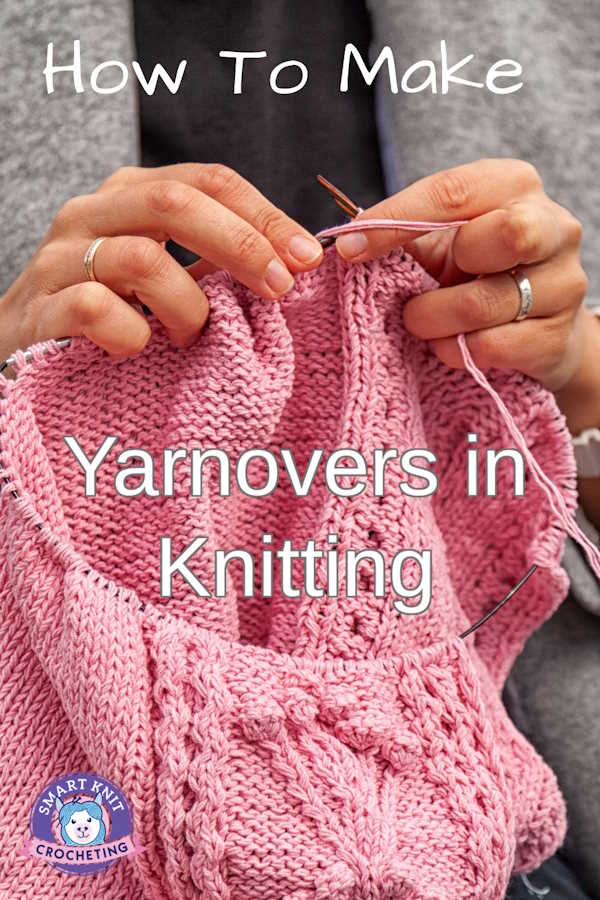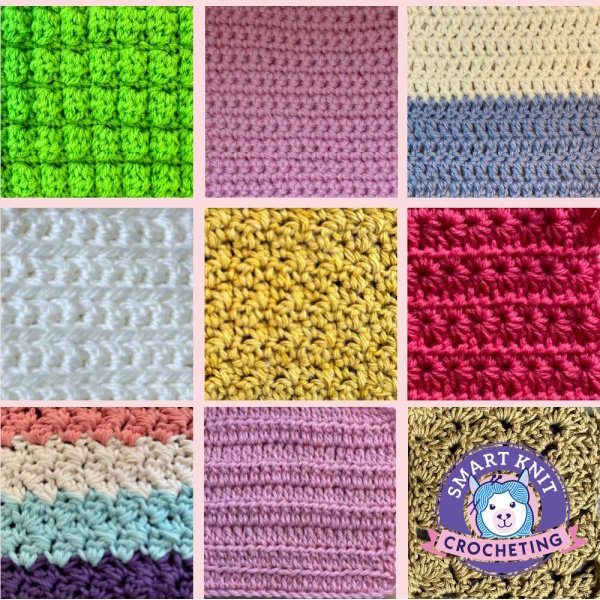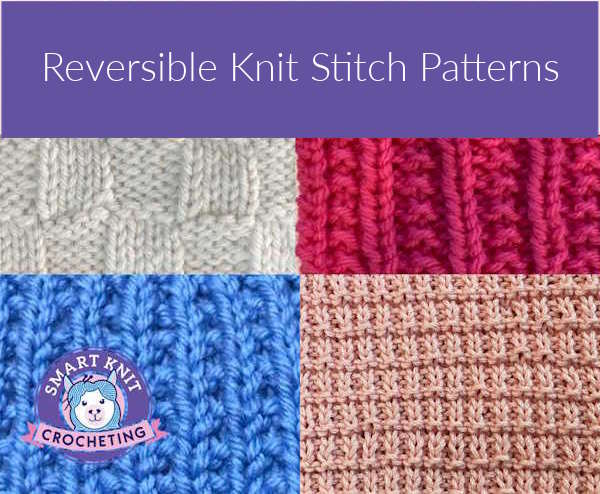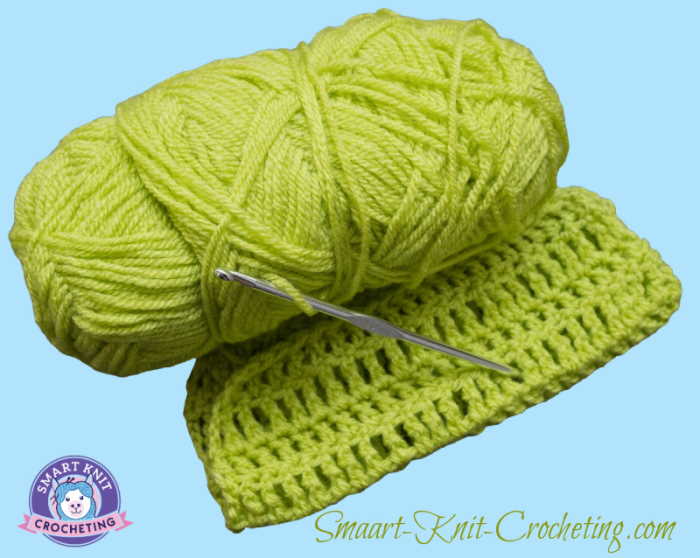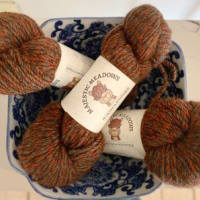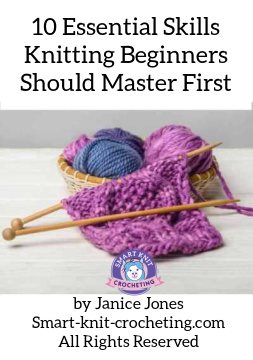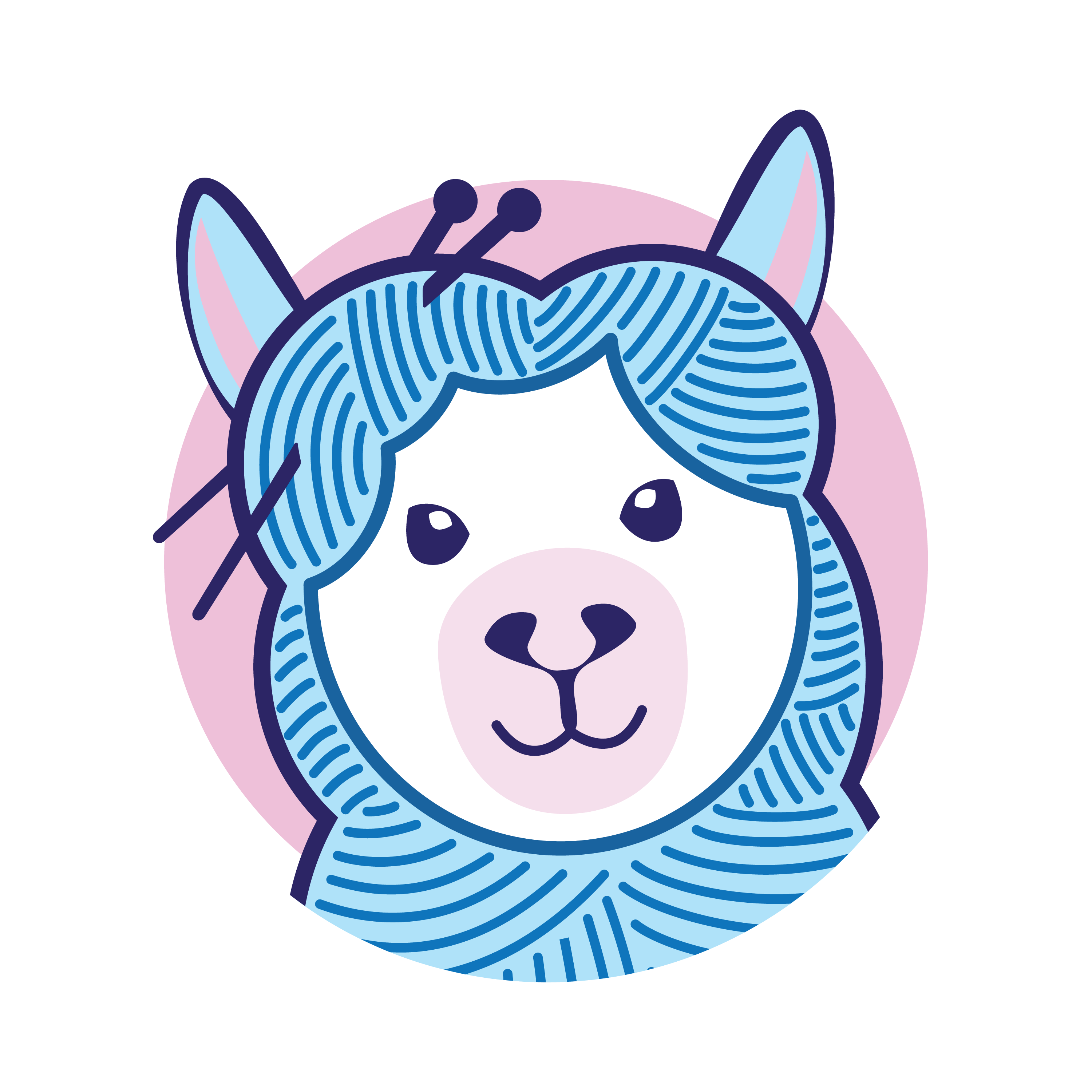- Home
- How to Knit: Basics
- Yarnover in Knitting
How to Make a Yarn Over in Knitting
Yarnover in Knitting by Janice Jones
The yarnover in knitting is a very easy beginner-friendly technique that creates an added stitch, so it is one of the many knitting increase techniques. You will commonly see them abbreviated as YO.
The result is a little hole or space in the fabric that can add interest and texture or create an airy quality, as you might find in lace. This technique is used when making lacy scarves, cowls, shawls, and other projects.
They are also used when creating eyelet fabric.
Sometimes yarnovers are used to make small buttonholes.
Yarnovers used in Lace Patterns
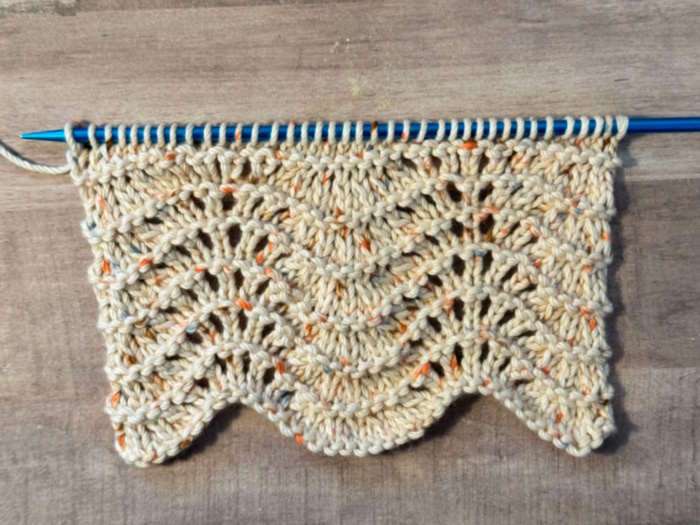 Yarnovers create little holes, sometimes called eyelets. This knit pattern is called Old Shale.
Yarnovers create little holes, sometimes called eyelets. This knit pattern is called Old Shale.Yarnovers used in Eyelet Fabric Patterns
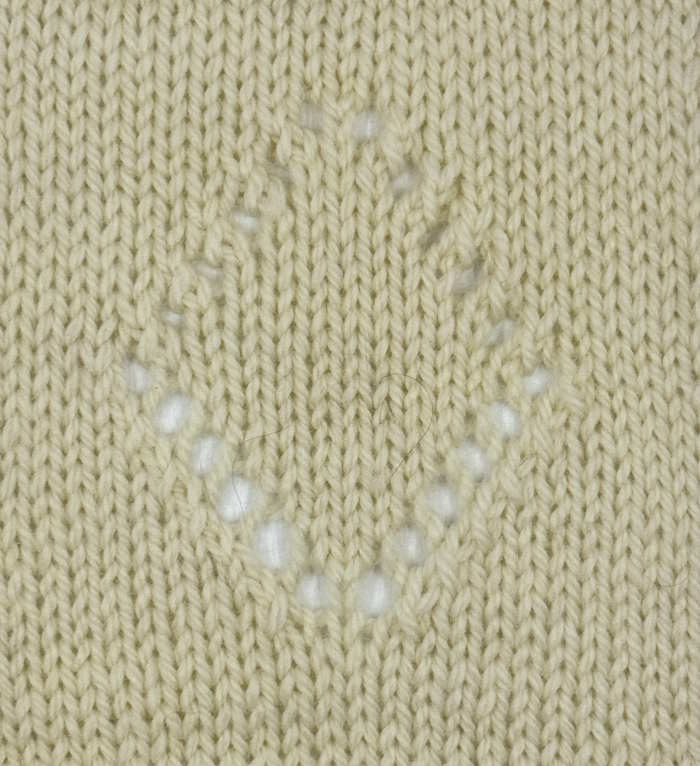 Yarnovers create this eyelet fabric. Notice how different these eyelets look depending on what type of stitch was made before and after them.
Yarnovers create this eyelet fabric. Notice how different these eyelets look depending on what type of stitch was made before and after them.Yarnovers Being Used to Make Buttonholes
 This buttonhole is small and would be perfect for an infant sweater.
This buttonhole is small and would be perfect for an infant sweater.Yarnover in Knitting : Different Ways YOs are Created
Many patterns will assume you already know how to make yarnovers, so they will not spell out exactly how to make them. The next couple of tutorials will help you know when and how to make yarnovers depending on where the yarnovers are located.
How to Make a Yarnover in Knitting: Between Two Knit Stitches (Knit-YO-Knit)
There are many different ways to make yarnovers in knitting. The most basic and easiest one to learn for beginners is the yarnover between two knit stitches. You might see this abbreviated as YO, Yf (meaning yarn forward), Yfon (yarn forward and over needle.
To make the yarnover between two knit stitches, you would work to the location where you want to make the yarnover. With the yarn in the back, bring it forward between the two needle tips and over the right needle, then make the next knit stitch.
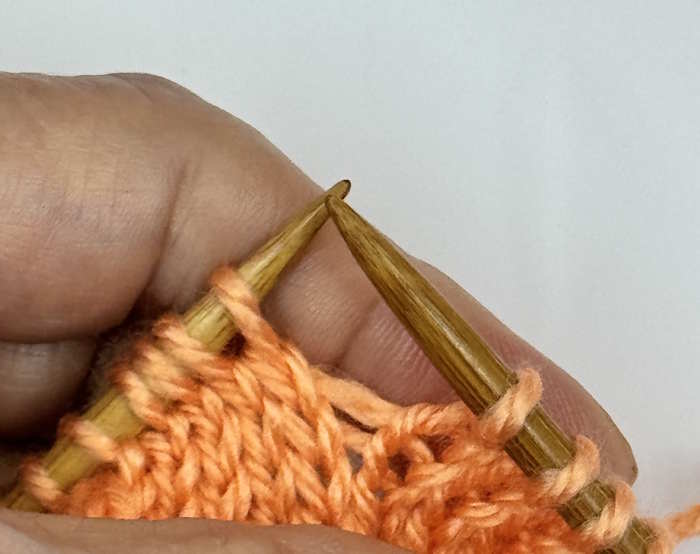

Making Yarnovers between Two Purl Stitches (Purl-YO-Purl)
Sometimes the pattern will require you to make a yarnover between two purl stitches. You might see YO, Yb (meaning yarn back, or Yrn (yarn around needle. These yarnovers are made opposite to those worked between two knit stitches. After making the purl stitch just before the yarnover, the yarn will be in the front.
Move the yarn over the right needle to the back and then around to the front. Think of it as a 360 degree circle. Finally work the next purl stitch on the left needle.
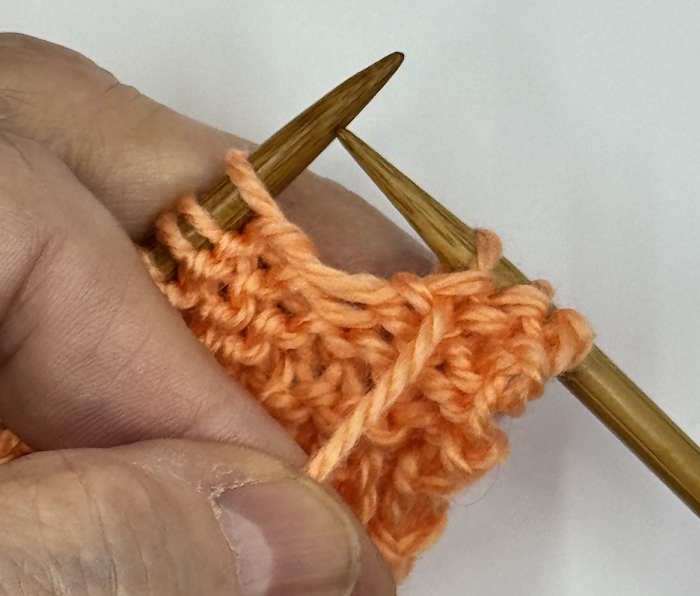
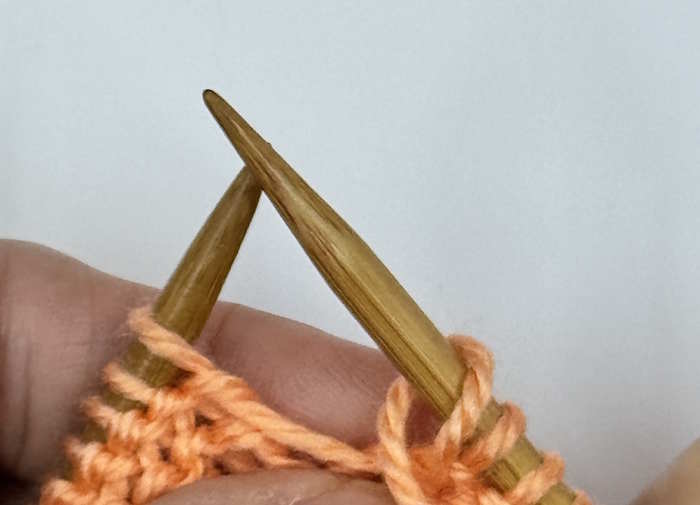
Yarnovers Between a Knit and Purl Stitch (Knit-YO-Purl)
This one is a bit trickier, but not hard. Remember that all yarnovers must travel over the right needle and then end up in the place where you want the next stitch to go.
After working the knit stitch, the yarn is in the back. Bring the yarn from the back between the two needle tips, to the front, then over the right needle to the back and then to the front again to make the next purl stitch. This one seems to create a bigger hole because the yarn has farther to travel. To prevent this, add a little tug to your tension. Abbreviations: YO, Yfrn (yarn forward and around needle).
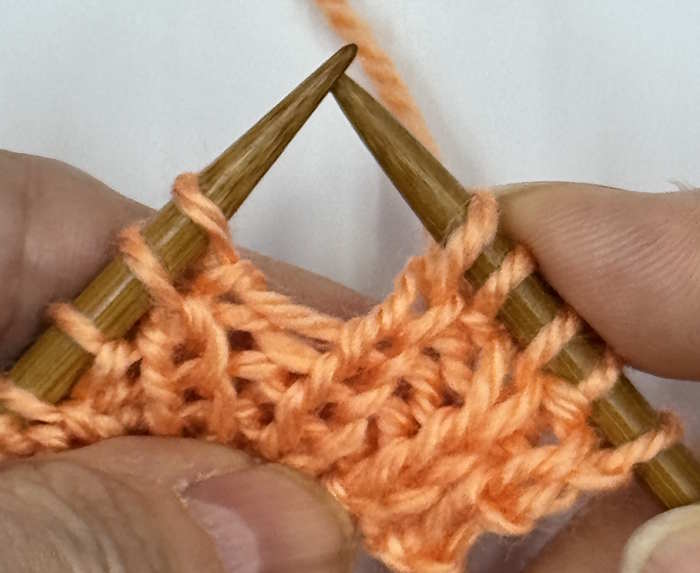
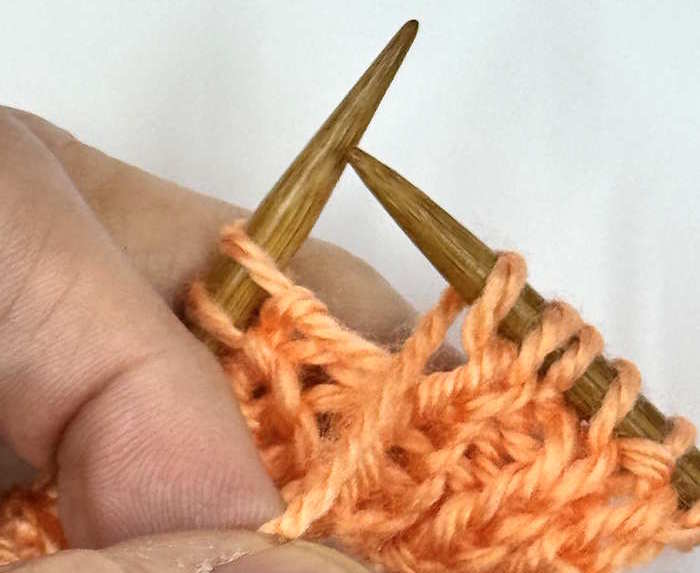
Yarnovers Between Purl and Knit Stitches (Purl-YO-Knit)
As I mentioned before, all yarnovers must travel over the right needle and arrive at the place where the next stitch is to be made. You'll see this technique abbreviated YO or Yon (yarnover needle).
To make this yarnover, the yarn begins in the front, then goes over the right needle, remaining there while you make the next knit stitch.
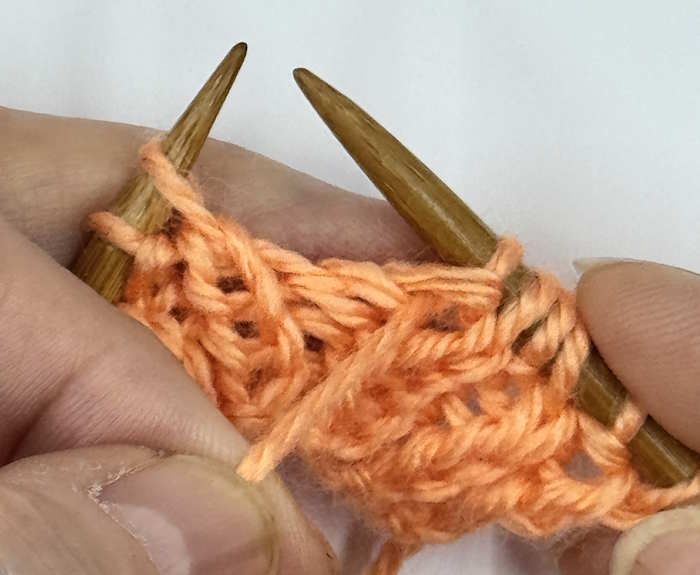
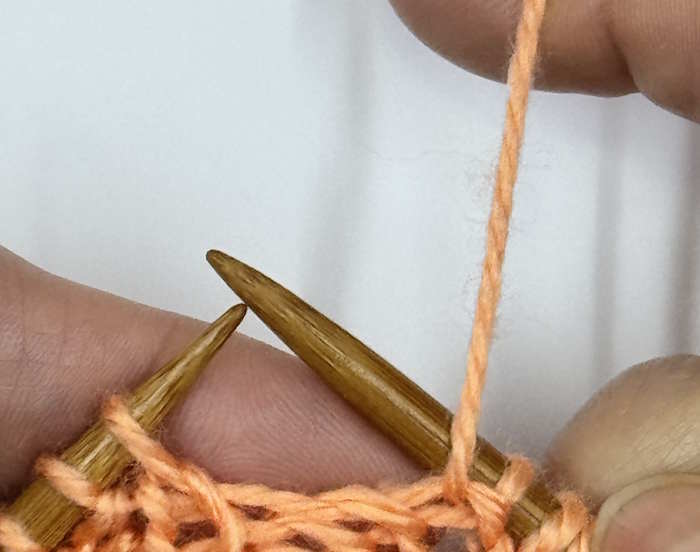
Tip
- Don't worry if you can't remember these "rules" -- just remember that the yarn must go over the right needle and end up where it needs to be to make the next stitch.
Can You Make Yarnovers at the Beginning of a Row?
Yes. If your pattern starts with a yarnover at the beginning of the row, look at the type of stitch that you will make next. If the second stitch is a knit stitch, hold your yarn in front of your right needle and work the knit stitch as usual. If the second stitch is a purl, hold the yarn in the back as you purl the stitch. In both cases, the yarnover will be created as an increase at the beginning of the row.
How to Knit or Purl the Yarnover Stitch on the Next Row?
There isn't anything magical about working the next row after yarnovers. Simply knit or purl the stitch in the same way you would any other stitch.
Correcting Mistakes with Yarnovers
I think that the biggest fear that beginners have when making yarnovers is what happens if I forget to make a yarnover or make one accidently.
When using yarnovers in easy lace patterns, the yarnover which creates an addition stitch is paired with a decrease so that the number of stitches in the row remains the same. (This is not a hard and fast rule because the row count may be different some patterns.)
- Counting: The earliest way to catch mistakes is to count the stitches after you finish the row.
- Fixing: If a yarnover is missing, don't rip out the entire row. Begin the next row and work over to where the missing yarnover should be. With the tip of the left needle find the little bar between the two stitches where the yarnover should have been worked and lift it up from the front to the back onto the left needle and work it as a new stitch.
- Lifelines: A lifeline is is a piece of yarn or embroidery floss (preferably in a different color so it is easy to see), placed at each row repeat. If a mistake is spotted, you can unravel it back to the lifeline and re-knit it. Hint: Jot down where you place the lifeline so you will know where to start.
What Does the Yarnover Look Like on the Needle?
You will be able to identify where you made yarnovers by their appearance. Notice in the photo below, normal knit or purl stitches rest straight on the needle. Yarnovers will appear as diagonal stitches.
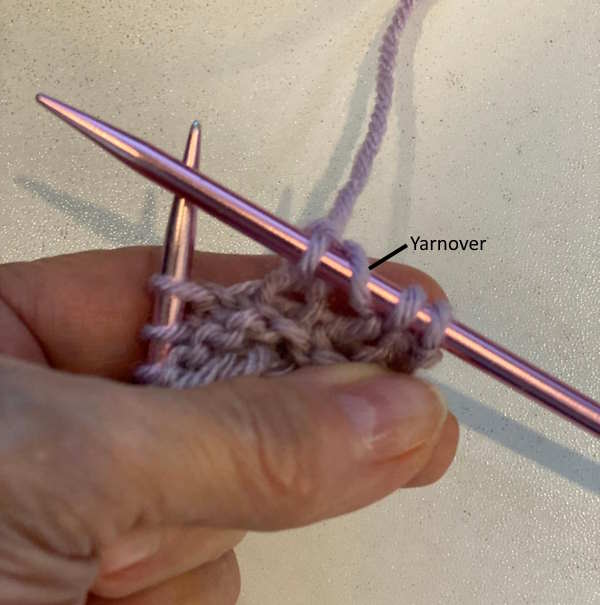
What Do Yarnovers Look Like In Written and Charted Patterns?
Patterns can either be written out or charted. Many lace patterns are charted because it is just easier to visualize what you are doing. Plus they are condensed in size which is a plus in printed patterns. Yarnovers shown in a knitted chart are referenced by large open circles. See below.
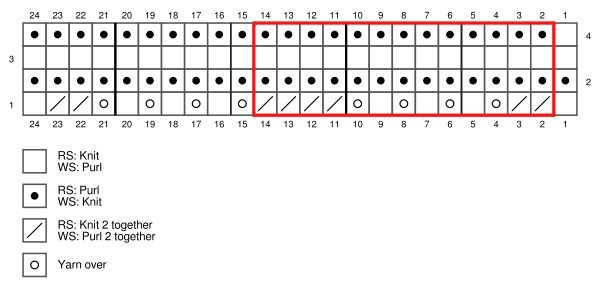
Yarnovers in a written chart might look something like this:
Row 1: (RS): Knit
Row 2: Purl.
Row 3: k1, *(k2tog) 3 times, (yo, k1) 6 times, (k2tog) 3 times, Rep from * to last st. k1.
Row 4: Knit across.
Sizes of Yarnovers
Sometimes finished yarnovers look like they are of different sizes. I found this video created by a master knitter explaining how to make yarn overs all the same size.

Frequently Asked Questions About How to Make a Yarnover in Knitting
Q: How do you fix a yarnover mistake?
Q: How do you fix a yarnover mistake?
If you make a mistake with a yarn over, unravel the stitch and redo it. Pay close attention to the direction of the wrap and ensure the loop is not too tight or loose. If you are making lace and have a lot of yarnovers, consider adding a lifeline periodically for bigger mistakes.
Q: How do you make two yarnovers in two knit stitches?
Q: How do you make two yarnovers in two knit stitches?
Make the first yarn over as you would normally. Bring the working yarn forward between both needles for the second yarn over. Then, wrap the yarn over the right needle, around to the back, and forward again. On the next row, each yarn over will be a separate stitch.
Q: How do you recognize a yarn over?
Q: How do you recognize a yarn over?
The yarnover stitch sits on the needle slightly at a diagonal rather than sitting straight on the needles. The yarn over will create a hole in the fabric which you can see by the next row.
Q: Are yarnovers combined with other techniques
Q: Are yarnovers combined with other techniques
Yes. The yarnover technique can be combined with various knitting stitches. Since the yarn over adds a stitch to the row, it’s often paired with a decrease, such as a K2tog (knit two together as one stitch). This keeps the stitch count the same on the row.
Q: Is the yarn over in knitting considered to be beginner friendly?
Q: Is the yarn over in knitting considered to be beginner friendly?
Yes. Consider a yarn over as just one more technique for moving stitches from one needle to the other needle. Start with simple patterns such as eyelet and easy lace patterns and work from there.
Conclusion
The yarnover knitting technique is a versatile and captivating addition to your knitting repertoire.
Mastering this skill allows you to knit intricate lace patterns and add visual interest to your projects. But the good news is that yarnovers are easy to make.
Remember to start with simple patterns and practice regularly to build confidence.
Happy knitting!
References
Vogue Knitting (available on Amazon)
The Principles of Knitting by June Hemmons Hiatt (available on Amazon)
Increase, Decrease by Judith Durant (available on Amazon)
Knitter’s Handbook: A Comprehensive Guide to the Principles and Techniques of Handknitting by Montse Stanley (available on Amazon)
